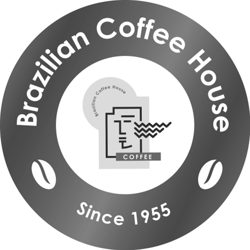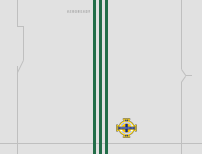- Northern Ireland 1920 Kitsempty Spaces The Blog 2016
- Northern Ireland 1920 Kitsempty Spaces The Blog Images
- Northern Ireland 1920 Kitsempty Spaces The Blog 2017

Orientation
Identification. The island of Ireland is known as Eire in Irish Gaelic. The name of the capital city, Belfast, derives from the city's Gaelic name, Beal Feirste, which means 'mouth of the sandy ford,' referring to a stream that joins the Lagan River.

The state of conflict in Northern Ireland is manifested in the names by which the Northern Irish identify themselves. Ulsters or Ulster Unionists identify themselves by ethnicity, religion, and political bent. These residents are generally Protestants from England who colonized the country in the nineteenth century and earlier supported William of Orange when he wrested the throne of England from the Catholic James II. The Nationalists are native Irish who were ruled by Irish chiefs. They are Roman Catholics who want Northern Ireland to be reunited with the Republic of Ireland, removing the northern counties from the sovereignty of England. The Ulster Unionists remain politically, religiously, and culturally loyal to England, yet feel that Northern Ireland is their homeland. Nationalists believe that the land is theirs, and their loyalty is to their compatriots in the Free State of Southern Ireland.
Murals in Northern Ireland have become symbols of Northern Ireland, depicting the region's past and present political and religious divisions. Belfast and Derry contain arguably the most famous political murals in Europe.It is believed that almost 2,000 murals have been documented since the 1970s. In 2014, the book, The Belfast Mural Guide estimated that, in Belfast, there were approximately. The immigrants who settled the Town of Londonderry, New Hampshire, were descendants of a colony migrating from Scotland to Northern Ireland (Ulster) about 1612. A large number of these Scotch-Irish settlers left their homes in Londonderry, Ireland, and arrived in Boston in 1718 to start a new life without religious wars and persecution. 100 years of Irish fashion in 10 key pieces With an eye on both tradition and modernity, Emer O'Reilly-Hyland chooses her top fashion items from the past century, one for each decade. The island of Ireland is known as Eire in Irish Gaelic. The name of the capital city, Belfast, derives from the city's Gaelic name, Beal Feirste, which means 'mouth of the sandy ford,' referring to a stream that joins the Lagan River. The state of conflict in Northern Ireland is manifested in the names by which the Northern Irish identify themselves.

Location and Geography. Northern Ireland is the smallest country in the United Kingdom, situated on the second largest island of the British Isles. It occupies one-sixth of the island it shares with the independent Republic of Ireland. Northern Ireland is composed of six of the twenty-nine counties of Ireland, covering about 5,452 square miles (14,120 square kilometers). It is separated from the Republic of Ireland by a three-hundred-mile-long artificial boundary. Northern Ireland makes up the northwestern corner of the island; the entire island is bordered on the west by the Atlantic Ocean, on the east by the Irish Sea, and on the south by the Celtic Sea. The waters around Northern Ireland's coast are shallow.
The climate is mild as a result of Atlantic Ocean breezes and the Gulf Stream, with comfortable summers and temperate winters. Snow is uncommon, and temperatures dip below freezing only a few times a year. However, rainfall is heavy. Low mountains with steep cliffs dropping off to the sea and fertile lowlands are the principal topographic features. The two major mountain ranges are the Sperrin Mountains and the Mourne Mountains. Most of the farmable land, in the middle of the country, is used as grazing pastures for livestock. Lough Neagh, in central Northern Ireland, is the largest lake in the British Isles.
Until seven thousand years ago, Ireland was linked to Europe by a land bridge, but the ocean eroded that bridge and separated Ireland from the continent. Scotland lies just thirteen miles east of the island across the English Channel.
The Upper Bann River begins in the Mourne Mountains and flows northwest for twenty-five miles before entering Lough Neagh. The Erne River, which is seventy-two miles long, starts in the Republic of Ireland and flows northward into Northern Ireland. The Foyle River, marking the northwestern boundary with the Republic of Ireland, passes through Londonderry and empties into the Atlantic Ocean, becoming a bay called Lough Foyle.
Soggy areas called peat bogs have developed in parts of the country. The bogs contain layers of vegetation that have partly decayed in the moist earth. As the layers build up, they form a thick crust of turf that is called peat. This turf, originally cut by hand, is now cut by machine. The resulting
briquettes are burned for fuel and remain the major source of heat and electricity in rural areas.Demography. In 1998, the Annual report of the Registrar General for Northern Ireland reported the population of Northern Ireland to be 1,668,000. The population is most dense in the east. In the 1980s, the population was described as being 70 percent Protestant and 30 percent Catholic, but 60 percent Protestant and 40 percent Catholic may be more accurate. The population breakdown is difficult to ascertain because many residents are reluctant to indicate their religion.
Catholic families have a higher birthrate because of their religious beliefs and their desire to surpass the population of the Unionists. Stability in the population has resulted from the fact that many Catholics were forced to go to London to escape unemployment.

Northern Ireland 1920 Kitsempty Spaces The Blog 2016
Linguistic Affiliation. English is spoken throughout the country, and the native language of Gaelic, or Gaeltacht, is disappearing. Many Gaelic speakers died in the Great Famine of the 1840s, and Gaelic was replaced by English, which was needed to achieve social mobility. Gaelic still carries a stigma as the language of the poor.
Gaelic is a Celtic language that probably was introduced by Celts in the last few centuries B.C.E. Similar to Scottish Gaelic, it shares common structures with Welsh and Breton. It is an idiomatic language with a complex grammatical system that is considered rich in terms of warmth and expressiveness. Irish is required at some schools but is taught with an emphasis on grammar rather than conversation. The Gaelic League, formed in 1893, is a revivalist organization, that attempts to propagate the Irish language and culture. In the 1920s, the Gaelic League attempted to deanglicize the country by gaelicizing the schools. It wanted to require that all teachers at teacher training colleges have a background and proficiency in Irish. However, the league realized that Gaelic would languish if it was not also used in the home environment.

Northern Ireland 1920 Kitsempty Spaces The Blog Images
Symbolism. The Union Jack flag and the British crown are associated with the Unionists both by their Protestant supporters and by their Catholic opponents. Members of the Orange Order have a picture of the crown on the huge drums that are used in the parades in which Orangemen celebrate the victory of William of Orange over James II at the Battle of the Boyne in 1690. Another image associated with the rivalry between Loyalists and Nationalists is the Ulster emblem of a right hand severed at the wrist from which no blood should flow.
Northern Ireland 1920 Kitsempty Spaces The Blog 2017
Northern Ireland is recognizable by its lush green countryside and stout mountains leading down to a steep and craggy shoreline. The flag of the Free State of Ireland, which has equal vertical bands of green, white, and orange is a symbol of the Irish nation.